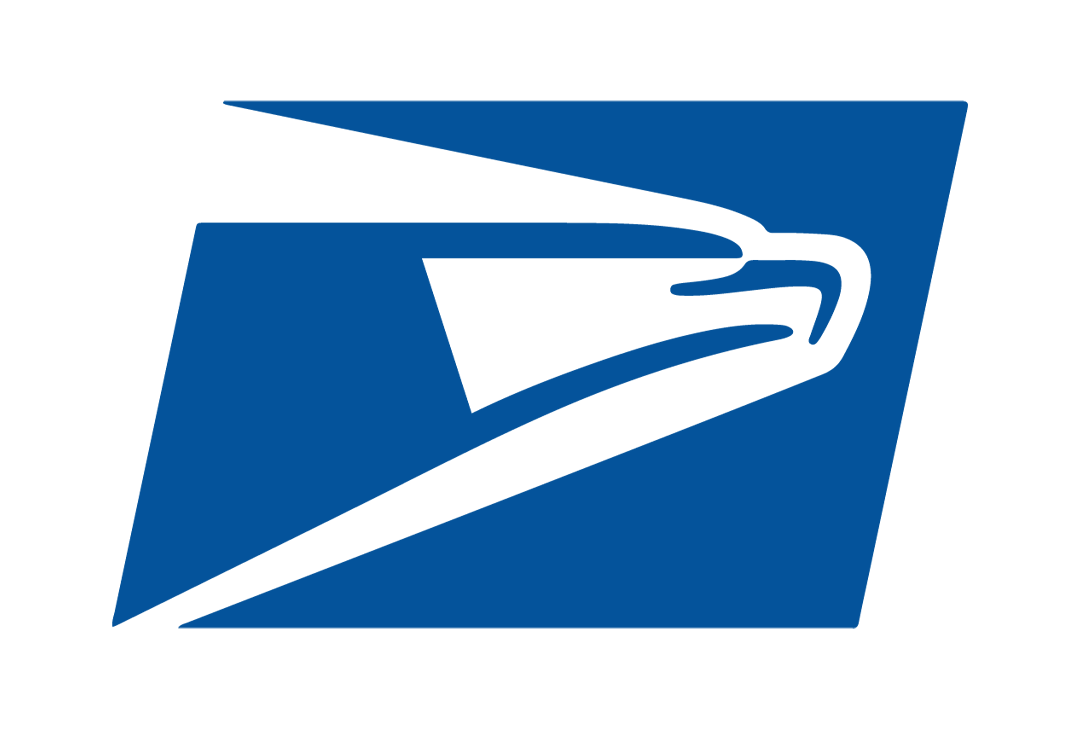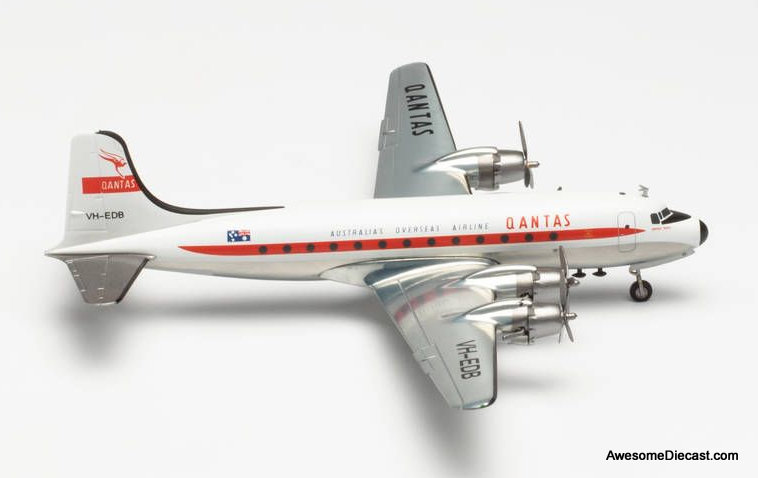This model can be displayed on the stand or with the landing gear down
The Douglas DC-4 is a four-engine (piston) propeller-driven airliner developed by the Douglas Aircraft Company. Military versions of the plane, the C-54 and R5D, served during World War II, in the Berlin Airlift and into the 1960s. From 1945, many civil airlines operated the DC-4 worldwide.
Following proving flights by United Airlines of the DC-4E it became obvious that the 52-seat airliner was too large to operate economically and the partner airlines recommended a long list of changes required to the design. Douglas took the new requirement and produced a new design, the DC-4A, with a simpler unpressurised fuselage, R-2000 Twin Wasp engines and a single fin and rudder. Both designs included tricycle landing gear, unlike the predecessor 2-engine DC-3.
The DC-4/C-54 proved a popular and reliable type, 1245 being built between May 1942 and August 1947, including 79 postwar DC-4s. Several remain in service as of 2014. One current operator is Buffalo Airways of Yellowknife, Northwest Territories.
Douglas continued to develop the type during the war in preparation for a return to airline use when peace returned. The type's sales prospects were affected when 500 wartime ex military C-54s and R5Ds came onto the civil market, many being converted to DC-4 standard by Douglas. DC-4s were a favorite of charter airlines such as Great Lakes Airlines, North American Airlines, Universal Airlines and Transocean Airlines. In the 1950s Transocean (Oakland, California) was the largest civil C-54/DC-4 operator.
Douglas produced 79 new-build DC-4s between January 1946 and August 9, 1947, the last example being delivered to South African Airways (8). Pressurization was an option, but all civil DC-4s (and C-54s) were built un-pressurized.
A total of 330 DC-4s and C-54s were used in the Berlin Airlift, which made them the most used types.
Overview
Reviews
This model can be displayed on the stand or with the landing gear down
The Douglas DC-4 is a four-engine (piston) propeller-driven airliner developed by the Douglas Aircraft Company. Military versions of the plane, the C-54 and R5D, served during World War II, in the Berlin Airlift and into the 1960s. From 1945, many civil airlines operated the DC-4 worldwide.
Following proving flights by United Airlines of the DC-4E it became obvious that the 52-seat airliner was too large to operate economically and the partner airlines recommended a long list of changes required to the design. Douglas took the new requirement and produced a new design, the DC-4A, with a simpler unpressurised fuselage, R-2000 Twin Wasp engines and a single fin and rudder. Both designs included tricycle landing gear, unlike the predecessor 2-engine DC-3.
The DC-4/C-54 proved a popular and reliable type, 1245 being built between May 1942 and August 1947, including 79 postwar DC-4s. Several remain in service as of 2014. One current operator is Buffalo Airways of Yellowknife, Northwest Territories.
Douglas continued to develop the type during the war in preparation for a return to airline use when peace returned. The type's sales prospects were affected when 500 wartime ex military C-54s and R5Ds came onto the civil market, many being converted to DC-4 standard by Douglas. DC-4s were a favorite of charter airlines such as Great Lakes Airlines, North American Airlines, Universal Airlines and Transocean Airlines. In the 1950s Transocean (Oakland, California) was the largest civil C-54/DC-4 operator.
Douglas produced 79 new-build DC-4s between January 1946 and August 9, 1947, the last example being delivered to South African Airways . Pressurization was an option, but all civil DC-4s (and C-54s) were built un-pressurized.
A total of 330 DC-4s and C-54s were used in the Berlin Airlift, which made them the most used types.
Purchasers of new-build DC-4s included Pan American Airways, National Airlines, Northwest Airlines and Western Airlines in the US, and KLM Royal Dutch Air Lines, Scandinavian Airlines System, Iberia Airlines of Spain, Swissair, Air France, Sabena Belgian World Airlines, Cubana de Aviación, Avianca, Aerolíneas Argentinas, Aeropostal of Venezuela (1946) and South African Airways overseas. Several airlines used new-build DC-4s to start scheduled transatlantic flights between Latin America and Europe. Among the earliest were Aerolíneas Argentinas (1946), Aeropostal of Venezuela (1946), Iberia Airlines of Spain (1946), and Cubana de Aviación (1948).
Basic prices for a new DC-4 in 1946–47 was around £140,000-£160,000. In 1960 used DC-4s were available for around £80,000.
Qantas Airways Limited is the flag carrier of Australia and its largest airline by fleet size, international flights and international destinations. It is the third-oldest airline in the world, after KLM and Avianca, having been founded in November 1920; it began international passenger flights in May 1935. The Qantas name comes from "QANTAS", an acronym for its original name, Queensland and Northern Territory Aerial Services, as it originally served Queensland and the Northern Territory, and it is nicknamed "The Flying Kangaroo". Qantas is a founding member of the Oneworld airline alliance.
The airline is based in the Sydney suburb of Mascot, adjacent to its main hub at Sydney Airport. As of March 2014, Qantas had a 65% share of the Australian domestic market and carried 14.9% of all passengers travelling in and out of Australia. Various subsidiary airlines operate to regional centres and on some trunk routes within Australia under the QantasLink banner. Qantas also owns Jetstar, a low-cost airline that operates both international services from Australia and domestic services within Australia and New Zealand; and holds stakes in a number of other Jetstar-branded airlines.











